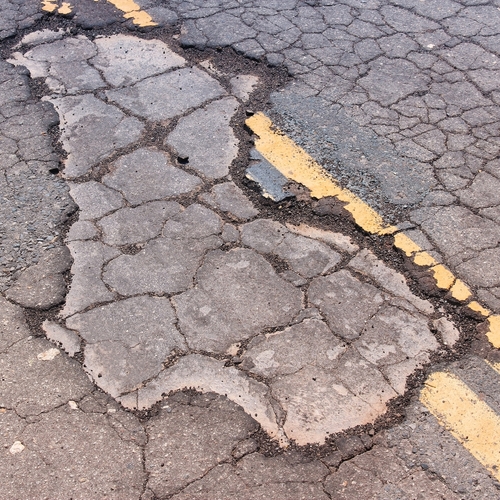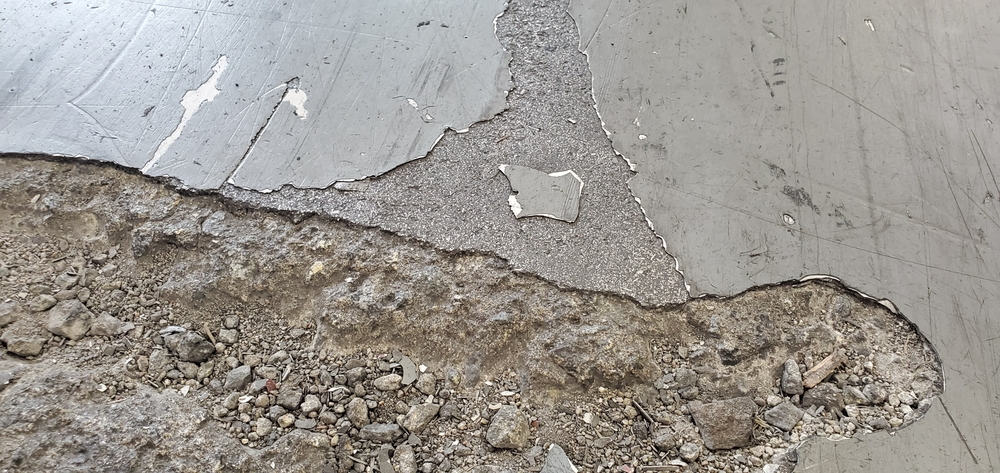Every year, thousands of California drivers experience accidents that go beyond simple human error or mechanical failure. According to the Federal Highway Administration, roadway departure crashes account for more than half of United States highway fatalities, involving vehicles that cross edge lines, center lines, or otherwise leave the traveled way. In California’s vast network of highways and local roads, dangerous conditions present a significant yet often overlooked threat to public safety.
When accidents occur due to poor road design, inadequate maintenance, or faulty signage, many drivers assume they have no recourse beyond insurance coverage. However, California law provides important protections for those who suffer injuries due to hazardous roadway conditions. Understanding who bears responsibility for maintaining safe roads—and when you can hold them accountable—empowers you to protect your rights and seek appropriate compensation.
Understanding Dangerous Road Conditions: More Than Just Potholes
Infrastructure Deterioration and Maintenance Failures

California’s extensive road network faces constant challenges from heavy traffic, weather conditions, and natural wear. Common infrastructure-related hazards include:
- Pavement deterioration: Potholes, cracked surfaces, and uneven roadways that can cause loss of vehicle control
- Drainage system failures: Poor water management leading to pooling and hydroplaning risks during California’s rainy seasons
- Road edge hazards: Deteriorating shoulders and dangerous drop-offs that threaten vehicles during emergency maneuvers
- Surface material issues: Loose gravel, oil spills, or debris that create slippery or unstable driving conditions
These maintenance failures often develop gradually, making them particularly dangerous as drivers may not recognize the hazard until it’s too late to avoid an accident.
Design and Engineering Deficiencies
Some of the most serious accidents result from fundamental design flaws rather than maintenance issues. Inadequate sight lines at intersections or highway on-ramps can prevent drivers from seeing oncoming traffic until collision becomes unavoidable. Unsafe merge lane designs, particularly common on older California highways, force drivers into dangerous situations where adequate merging distance doesn’t exist.
Missing or inadequate guardrails represent another critical design deficiency, particularly on mountain highways and coastal routes where vehicles leaving the roadway face catastrophic consequences.
Signage, Markings, and Traffic Control Failures
Well-maintained roads become dangerous when proper signage and traffic control systems fail. Faded or missing road markings confuse drivers about lane boundaries, particularly during nighttime or adverse weather. Incorrect or missing warning signs fail to alert drivers to upcoming hazards, construction zones, or changing road conditions.
Malfunctioning traffic signals create intersection dangers, while inadequate lighting contributes to nighttime accidents. Construction zones present particular challenges when temporary signage or traffic control measures don’t meet safety standards.
Legal Framework: Who Bears Responsibility for Road Safety
Government Entity Obligations and Liability
Understanding government liability requires recognizing different responsibility levels within California’s transportation system. The California Department of Transportation (Caltrans) maintains primary responsibility for state highways and interstate systems. Local government entities—cities, counties, and special districts—bear responsibility for local roads and municipal infrastructure.
California law recognizes that government entities cannot guarantee perfect road conditions. However, when agencies know or should know about dangerous conditions and fail to take appropriate action, they can be held liable for resulting accidents. This liability extends beyond simple maintenance to include design decisions and hazard response protocols.
Contractor and Third-Party Responsibility
Road construction and maintenance increasingly involves private contractors working under government contracts. When contractors create dangerous conditions through negligent work or inadequate safety measures, they may bear direct liability for resulting accidents. This includes construction companies that fail to maintain safe work zones and utility companies whose work affects roadway safety.
Establishing Negligence in Road Condition Cases
Proving negligence in dangerous road condition cases requires demonstrating four essential legal elements within California’s framework:
- Duty of Care: The responsible entity owed an obligation to maintain reasonably safe roadway conditions for all lawful users
- Breach of Duty: Evidence showing the entity’s actions or inactions fell below acceptable safety standards through inadequate maintenance, defective designs, or negligent repairs
- Causation: Direct causal connection between the dangerous condition and the accident, demonstrating the road defect was a substantial contributing factor
- Damages: Actual losses resulting from the accident, including property damage, medical expenses, lost income, and pain and suffering
Each element requires specific evidence and expert analysis to establish a compelling case against government entities or contractors responsible for roadway safety.
Your Legal Rights and Available Remedies
The Government Claims Process: Critical First Steps
California law requires specific procedures when pursuing claims against government entities for dangerous road conditions. The Government Claims Act establishes strict deadlines—generally requiring formal claims within six months of the accident date. This administrative process serves as a prerequisite to filing lawsuits and provides agencies opportunity to investigate and potentially resolve claims.
Documentation becomes crucial during this process. Preserving evidence of the dangerous condition, obtaining accident reports, and maintaining damage records help support your claim. Photographs, witness statements, and medical records provide essential evidence for demonstrating both the hazardous condition and its role in causing your accident.
Civil Litigation Options and Considerations
When government claims are denied or offer inadequate compensation, California law provides the right to pursue civil litigation. However, these cases present unique challenges that distinguish them from typical personal injury claims. Government entities retain certain immunities that can complicate litigation, requiring thorough legal analysis to identify viable claims.
The statute of limitations for lawsuits against government entities differs from claims against private parties, emphasizing the importance of prompt action following accidents involving dangerous road conditions.
Compensation Available for Road Condition Injuries
California law provides several categories of compensation for injuries resulting from dangerous road conditions. Economic damages include current and future medical expenses, lost income during recovery, and property damage. Non-economic damages recognize intangible impacts including physical pain, emotional distress, and reduced quality of life.
When dangerous road conditions result in fatalities, California’s wrongful death statutes provide compensation for surviving family members, including funeral expenses, lost financial support, and emotional impact damages.
When Professional Legal Assistance Becomes Essential
Complex Liability Determinations
Dangerous road condition cases often involve multiple potentially responsible parties with overlapping jurisdictions. Determining whether Caltrans, local entities, contractors, or utility companies bear primary responsibility requires thorough investigation and legal analysis. Government immunity doctrines add complexity, as various immunity provisions can limit liability in certain circumstances.
Serious Injury and High-Stakes Cases
The severity of injuries often determines whether professional legal representation is necessary. Serious injuries requiring extensive medical treatment, long-term rehabilitation, or resulting in permanent disabilities justify investment in experienced legal counsel. High medical expenses, ongoing care needs, and lost earning capacity create complex damage calculations requiring expert analysis.
Navigating Government Bureaucracy
Government entities employ experienced attorneys who understand legal protections available to public agencies. The procedural requirements for government claims demand precision and attention to detail that can determine case success or failure. Professional legal assistance ensures compliance with all deadlines, documentation requirements, and procedural steps necessary to preserve your rights.
Protecting Your Rights: Taking Action After Road Condition Accidents
Understanding your rights regarding dangerous road conditions empowers you to take appropriate action when accidents occur. California law provides meaningful protections for those injured due to hazardous roadway conditions, but these rights must be exercised promptly and properly to be effective.
The complexity of government liability cases, combined with strict procedural requirements and tight deadlines, makes professional legal consultation advisable for anyone seriously injured in road condition accidents. While not every case requires litigation, understanding your options ensures informed decisions about pursuing compensation and holding responsible parties accountable.
Remember that seeking compensation for dangerous road condition injuries serves broader public safety goals by encouraging government entities and contractors to prioritize roadway maintenance and safety improvements. Your case may help prevent future accidents by highlighting hazardous conditions requiring attention.
Take Action to Protect Your Rights
If you’ve been injured in an accident involving dangerous road conditions in California, time is of the essence. The strict deadlines and complex procedural requirements for government claims mean that waiting can jeopardize your ability to seek compensation. Don’t let bureaucratic hurdles prevent you from holding responsible parties accountable for their negligence.
At Ellis Riccobono, LLP, we understand the challenges of pursuing claims against powerful government entities and their contractors. Our experienced legal team has the resources and expertise necessary to investigate dangerous road conditions, navigate complex government immunities, and fight for the compensation you deserve. We’re committed to leveling the playing field and ensuring that justice isn’t reserved only for those with power and influence.
Contact Ellis Riccobono, LLP today at (424) 901-1202 or email us at info@ertriallawyers.com to schedule a consultation about your dangerous road condition case. Let us help you understand your rights and take the first steps toward securing the compensation and accountability you deserve.

